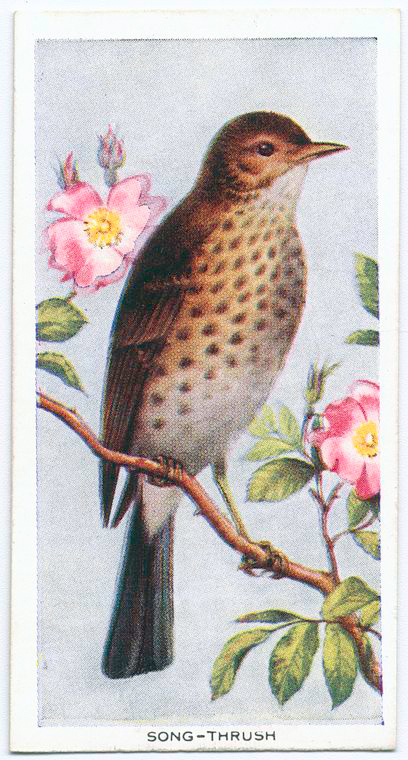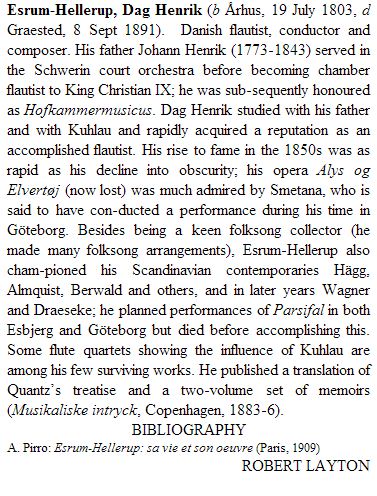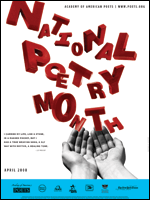Viewing: Blog Posts Tagged with: april fools, Most Recent at Top [Help]
Results 1 - 11 of 11
Blog: E is for Erik (Login to Add to MyJacketFlap)
JacketFlap tags: polar bears, april fools, presidential polar bear post card project, Add a tag
Blog: ALSC Blog (Login to Add to MyJacketFlap)
JacketFlap tags: Children's Literature (all forms), April Fools, Blogger Jennifer Schultz, trickery, Add a tag
Are you planning April Fool’s hijinks at your library? Even if you don’t plan to announce to your Facebook followers that books will now be shelved according to color, you can celebrate with reading or displaying books that involve trickery or unexpected endings:

(image taken from Scholastic)
I’m leaving off several titles in the name of brevity, but I couldn’t forget Eric Kimmel’s retelling of Anansi and the Moss-Covered Rock. The clever spider (in some stories, he’s human) tricks the other animals in the forest with much glee and abandon, until he meets his match in shy little Bush Deer. When parents/community members ask for recommendations for a “guest reader” session in which they are participating, I inevitably recommend this title.
(image taken from Julia Sarcone-Roach’s website)
The Bear Ate Your Sandwich was one of my top favorite pictures books of 2015. I don’t want to give too much away, but if you ever needed to get the concept of “unreliable narrator” across, you should use this as a perfect example.
(image taken from Margaret Read MacDonald’s website)
Mabela the Clever is one of my favorite folktale adaptations by Margaret Read MacDonald. This folktale, adapted from the Limba culture in Sierra Leone, is a clever cautionary tale about the importance of keeping your wits about you and paying attention, as told through the perspective of a young mouse who must outsmart a cat soliciting members for its special and secret club.
Snip! Snap! What’s That?
(image taken from Scholastic)
Would you be scared if an alligator broke into your house? YOU BET YOU WOULD! This tale of three children who get tired of being freaked out by the alligator has a delicious amount of suspense perfect for keeping toddlers on the edge of their story mats, but without causing them to run out the story time room.
What other books would you add to an April Fools’ display or story time (that isn’t specifically about the day)? Discuss in the comments!
The post April Fools’ Day at the Library appeared first on ALSC Blog.
Blog: OUPblog (Login to Add to MyJacketFlap)
JacketFlap tags: holmes’, doyle’s, wakes, Literature, short stories, mystery, garden, sherlock holmes, holmes, april fools, Oxford World's Classics, arthur conan doyle, Humanities, sherlock, *Featured, Add a tag

Here at Oxford University Press we occasionally get the chance to discover a new and exciting piece of literary history. We’re excited to share the newest short story addition to the Sherlock Holmes mysteries in Sherlock Holmes: Selected Stories. Never before published, our editorial team has acquired The Mystery of the Green Garden, now believed to be Sir Arthur Conan Doyle’s first use of the Sherlock Holmes’ character in his writing. Written during Doyle’s time at Stonyhurst College before entering medical school, the short story displays an early, amateur style of writing not seen in his later published works.
The Mystery of the Green Garden is set during Sherlock Holmes’ childhood – a rarely discussed part of Holmes’ life. Holmes’ is only sixteen years old when he is called to his first case. Unlike many of the stories in the Holmes series which are narrated by the loyal Dr. Watson, Holmes himself tells the short, endearing tale of his mother’s beloved garden. Getting our first look at his parents, Holmes briefly describes his mother as a “lively but often brooding woman.” We catch only a glimpse of his father who he calls a tireless civil serviceman with, “rarely enough time to fix even a long ago missing board in the kitchen’s creaking floor.”
Before attending university where he first acquired his detective skills, and moving to 221S Baker Street to practice his craft, Holmes lived at 45 Tilly Lane overlooking “a lush, never ignored garden.” Described as his mother’s favorite pastime, she gardened tirelessly day in and day out. As a young boy he recalls “spending countless hours playing in the dirt as mother tended to her beloved flowers and ferns.”
One morning, Holmes wakes to discover the garden destroyed. Flower beds are overturned, and shrubbery and plants are ripped apart. His mother is beside herself upon seeing her hard work demolished, and Holmes vows to discover the foolish culprit behind the dastardly act. A neighbor provides the first clue that sets the wheels in motion. His elderly neighbor who often wakes “before the sun has met the sky,” describes to Holmes a “tall, lean man with a crooked gray cap” that he saw running down the pathway between their two houses in the early hours of the morning while everyone in town still slept. Without any experience at solving cases, Doyle displays the first use of Holmes’ abductive reasoning skills later developed in the stories. As Holmes gathers clues as to what seems to be a random act, a story bigger than anyone can imagine slowly unravels.
April Fools! We hope we haven’t disappointed you too much. Although The Mystery in the Green Garden is just the work of a fool’s mind, there are seven Sherlock Holmes novels in the Oxford World’s Classics series. Sherlock Holmes: Selected Stories includes over a dozen stories truly written by Sir Arthur Conan Doyle.
For over 100 years Oxford World’s Classics has made available the broadest spectrum of literature from around the globe. Each affordable volume reflects Oxford’s commitment to scholarship, providing the most accurate text plus a wealth of other valuable features, including expert introductions by leading authorities, voluminous notes to clarify the text, up-to-date bibliographies for further study, and much more. You can follow Oxford World’s Classics on Twitter, Facebook, or here on the OUPblog. Subscribe to only Oxford World’s Classics articles on the OUPblog via email or RSS.
Subscribe to the OUPblog via email or RSS.
Subscribe to only literature articles on the OUPblog via email or RSS.
The post Sherlock Holmes’ beginnings appeared first on OUPblog.
Blog: OUPblog (Login to Add to MyJacketFlap)
JacketFlap tags: Online products, Electronic Enlightenment, conman, daniel parker, Georges Pierre des Clozets, homunculus, Robert Boyle, asterism, boyle, ‘patriarch, irenic, mesnillet, History, alchemy, chemistry, pierre, British, April Fool's Day, april fools, Europe, patriarch, *Featured, antioch, Add a tag
By Daniel Parker
Be honest: did you once believe that spaghetti could grow on trees? That cats needed headphones? Or that the moon was made of cheese? Actually, don’t worry about that last one; I’m still sure that’s true. However embarrassingly you may have been hoodwinked on April Fool’s Day in the past, it is incredibly unlikely that you’ll have ever been swindled by French confidence trickster Georges Pierre des Clozets, who represented a completely fictional secret Alchemy society called ‘The Asterism’. That dubious honour fell to Robert Boyle, philosopher, chemist, physicist, and inventor, who was duped in the latter part of the 17th century.
Between 1677 and 1678 Robert Boyle became the victim of a progressive French confidence trickster from Caen called Pierre, who claimed to be the agent of a secret international society of alchemists known mysteriously as ‘The Asterism’. The leader of The Asterism was described as the ‘Patriarch of Antioch’, resident in Constantinople. Pierre claimed to be able to work as an intermediary between Robert Boyle and the head of this exclusive society, Georges du Mesnillet, who Pierre referred to as the Patriarch of Antioch. The Asterism was, allegedly, a society comprised of the leading alchemists from around the world, a society that held the secrets to the riddles that had notoriously plagued Robert Boyle throughout his career. Pierre promised that Boyle would be made a member of The Asterism and, therefore, be privy to these alchemical secrets if he followed his orders.
There were a few problems with this. Firstly, The Asterism was an entirely fictional society made up by Pierre. Secondly, Georges du Mesnillet was not the Patriarch of Antioch (nor was there ever a French Patriarch of Antioch). Georges du Mesnillet was just an old acquaintance of Pierre’s. And thirdly, many of the alchemical secrets Pierre promised to impart were chemically impossible. Of course, Robert Boyle wasn’t to know any of this. Pierre expertly played on Robert Boyle’s obsessive fascination with alchemy, and toyed with Boyle’s perception of what was plausible and, more importantly, what was implausible. At one point during their correspondence, Pierre even managed to convince Boyle that one of the Chinese members of the society based in France had grown a fully formed homunculus in a jar.

So how did Pierre manage to successfully dupe the otherwise incredibly intelligent Robert Boyle?
As well as making a good personal impression on Boyle when the two met in early 1677 – Pierre is alluded to as the ‘illustrious stranger’ and ‘foreign virtuoso’ in Boyle’s An Historical Account of a Degradation of Gold by an Anti-Elixir – the French conman manipulated leading European periodicals to corroborate his fanciful tale. For instance, the stories Pierre told Boyle, such as the Patriarch of Antioch working towards the “reunification of the Greek and Latin Churches”, were backed up in France’s Mercure Galant and Holland’s Haerlemse Courant. The latter was published by Haarlem printer Abraham Casteleyn and it had an excellent reputation for reliability, and for acquiring sensitive international information ahead of its rivals. We also know that Robert Boyle read this publication during the years that Pierre fed ‘information’ to the publishers, and that Boyle was an irenic Christian, so these stories would have appealed to him and helped him believe the lies Pierre was telling him. The artifice of Pierre was such that he made Boyle trust him implicitly.
In early 1678 Robert Boyle was promised by Pierre that a triple-locked chest containing the alchemical secrets of The Asterism would be delivered to him as his membership had been approved by the (pseudo) Patriarch of Antioch. It was at this point that Pierre’s letters to Boyle started to dry up. Pierre’s silence was only punctuated by his bizarre excuse that the delays were due to a freak canon accident that had resulted in him breaking his lower jaw bone and losing part of his forehead. Needless to say, this triggered Boyle’s long overdue scepticism, and soon he found out the embarrassing nature of his correspondence with Pierre and the fictional society of The Asterism.
This embarrassing episode did not just impact on Robert Boyle’s pride, but his bank balance too. Pierre, and the fictional Patriarch of Antioch, swindled Robert Boyle to the tune of several hundred pounds worth of gifts. Amongst many other things, here are a few items Robert Boyle sent Pierre, on the ‘request’ of the Patriarch of Antioch: a telescope, assay balances, a globe, one hundred glass vials, jackets of fine fabric, eight rods of gold-coloured moiré, and a chiming clock over three feet tall. The only gift that we can be sure Boyle received in return, based on the correspondence between them, was a basket of fruits and cheeses. I think it’s fairly obvious who came out on top of that exchange.
Pierre used the gifts and money he had received from Robert Boyle, and numerous other victims throughout the 1670’s, to purchase an extravagant estate in Bretteville in the spring of 1680. While building and planting on the site, Pierre became ill with inflammation of the lung and died in May 1680. His family inherited the estate and the missive that announced his death summed up his mysterious existence perfectly: “Such was the end of this man, whose character had been so little known, and after his death we know even less than when he was alive”.
This article was written by Daniel Parker, Publicity Assistant at OUP, with the help and guidance of the Electronic Enlightenment team. Electronic Enlightenment currently has 13 letters from Georges Pierre Des Clozets to Robert Boyle written in French, along with their English translations. Electronic Enlightenment is a scholarly research project of the Bodleian Libraries, University of Oxford, and is available exclusively from Oxford University Press. It is the most wide-ranging online collection of edited correspondence of the early modern period, linking people across Europe, the Americas, and Asia from the early 17th to the mid-19th century.
Subscribe to the OUPblog via email or RSS.
Subscribe to only history articles on the OUPblog via email or RSS.
Image credit: Robert Boyle by Johann Kerseboom via Wikimedia Commons.
The post Georges Pierre des Clozets: the 17th century conman appeared first on OUPblog.
Blog: OUPblog (Login to Add to MyJacketFlap)
JacketFlap tags: Deane Root, Grove Music, Online products, Grove Music Online, oxford music, Anna-Lise Santella, Charles Hiroshi Garrett, fake article contest, spoof contest, Music, april fools, gmo, oxford music online, *Featured, Arts & Leisure, Add a tag
By the Grove Music Online editorial team
Just in time for April Fool’s Day we are pleased to announce the results of this year’s Grove Music Online Spoof Article contest.
This year’s submissions were all biographies, perhaps because Grove’s stylistic prescriptions for biographies lend themselves well to parody. Competition was fierce and hilarious. One of our judges reports, “You all made me spill my coffee. Twice.”

Song thrush. Digital ID: 1132614. New York Public Library.
- Deane Root, editor in chief of Grove Music Online, and Professor of Music, Director and Fletcher Hodges, Jr. Curator of the Center for American Music, University of Pittsburgh, has been immersed in Grove style since he worked under Stanley Sadie on the first New Grove Dictionary of Music and Musicians.
- Charles Hiroshi Garrett, Associate Professor of Musicology at the University of Michigan School of Music, Theatre & Dance served as editor in chief for The Grove Dictionary of American Music, Second Edition. He is currently working on Joking Matters, a book that explores music, humor, and contemporary culture.
- Anna-Lise Santella edits Grove Music/Oxford Music Online as well as the music modules of Oxford Bibliographies and Oxford Handbooks Online. She spends a lot of time with style guides and once read the 1927 edition of Grove cover to cover for fun.
We received a number of excellent selections, all of which observed Grove style and took care to include some plausible details among the ludicrous so that they might pass muster.
Judge Root noted, “It’s very difficult to choose among these four offerings. Indeed, in wit and prose most seem to have flowed from the fingertips of the same inspired author.” Judge Root was right about that: Three of our four shortlisted articles were written by a single author. Root added, “This year brings us brief biographical entries, thumbnail sketches of inspired beings in whom some of us might find our imaginary Doppelgänger.”
***
Third runner up:
Bach, Davide Adolphus Iestyn (b Rimsting, Bavaria 29 Feb 1764, d Merthyr Tydfil, Wales 22 Apr 1833), German composer, organist, and political agitator. A distant relative of J.S. Bach, D.A.I. Bach’s early career is veiled in obscurity. It is known from the personal letters of his father, Johann Maldwyn Bach (1740 – 1800) that D.A.I. Bach moved to the home of his paternal great grandmother in Fochriw, Wales in 1785 following a failed attempt to poison the Elector of Rimsting in protest about the feudal laws still employed in Bavaria at that time. He is credited with establishing the tradition of Lutheran hymn singing in Wales, translating Ein Feste Burg into Welsh for the Eisteddfod at Corwen in 1789. His most famous work is the ‘Steam’ Cantata (Schnell, Schneller, am Schnellsten!) written to celebrate the first journey of Richard Trevithick’s steam engine from Merthyr Tydfil to Penydarren in 1804. He was implicated as a ring leader of the Merthyr Riots of 1831, describing himself as a ‘solider for freedom’. He escaped punishment by disguising himself as an iron worker at the famous Dowlais works. His opera Uumo di Ferro, a semi-autobiographical account of this episode, was revived in 1987 as part of the Urdd Eisteddfod in Merthyr Tydfil. Bach’s involvement in Welsh political protest earned him a reference in the folk song Sospan Fach (‘D.A.I. Bach y sowldiwr’). In a cruel twist of fate, D.A.I. Bach died on the same day as Trevithick in 1833, following a railway accident.
Bibliography
ed. Llewellyn Ein Brief Aus Rimsting: the letters of Johann Maldwyn Bach (Treorchy, 1933)
Cyfansoddiadau llenyddol buddugol: Eisteddfod Genedlaethol Urdd Gobaith Cymru, Merthyr
Tudful a’r Cylch 1987 (Cardiff 1987)
V. Jones The Iron Men of Merthyr (Bangor, 2009)
Root notes, “Another long-lost member of the prolific family: a cwrthed Bach perhaps? Surely those lacking facility with the Welsh language are missing some humor here (“dai bach” means little David, raising expectations for references to slingshots and giants).” Judge Santella added, “This article gets bonus points for including references to actual events that leant it the air of plausibility and for including Welsh phrases that stood up to my (admittedly limited) translation abilities. It lacked, however, a signature, which is not only a missed opportunity for additional hilarity, but also against Grove’s preferred style for an article that includes bibliography. This article was submitted by Steven Griffin.
***
Second runner up:
Humble, Maria Felicity (b Hampshire, 1762, d Hampshire, 1813). English composer and pianist. Initially denied the musical tuition bestowed on her four brothers, Humble was eventually permitted to attend lessons by her parents, a vicar and his wife, after her threat to hold her breath for a dangerously long time led to an incident in which the parish doctor had to be called, at considerable expense and embarrassment to the family. This was the last in a series of subversive acts undertaken by Humble in protest at her exclusion; others included doctoring her father’s sermons shortly before church services, resulting in some unfortunate declarations from the pulpit.
Humble proved to be skilful and naturally musical, soon outstripping her brothers in her aptitude at the keyboard, and in her understanding of harmony, counterpoint, singing, and composition. The resultant humiliation felt by her brothers manifested itself in a number of resentful gestures, including the destruction or defacement of many of Humble’s scores. Of those that survive, most bear the marks of sibling rage, with one set of handwriting in particular – identified to be that of her youngest brother, Percy – revealing a highly scatological mind.
Humble resorted to keeping her works locked in a bureau; as a consequence, none were performed or published during her lifetime. Pieces include numerous highly accomplished songs and piano sonatas, some of which have been hailed by Charles Rosen as ‘superior even to Beethoven’.
Bibliography
C. Rosen, Forgotten Classical Masters (London and New York, 1972), 56–62
F. Tinkle, From Humble Origins to an Even Humbler Reputation (London, 1964)
JOSEPH KERMA
Judge Root observes, “Reflecting timely concerns about sexist male suppression of female creativity and sibling rivalry among composers, this bio presents a remarkable amount of familial dirty linen for someone whose birth and death dates are unknown, and draws in two late male authorities who might have been reluctant to be associated with this Humble musician, no matter the sardonic Felicity.” Judge Santella concurs that the level of detail combined with the signature would have made her suspicious. “This would not have gotten by us, but I am 100% in favor of the title of F. Tinkle’s biography.”
***
First runner up:
Fogger-Houndsmilk, George (b Guildford, 24 August 1937, d Kingston upon Hull, 26 December 1999). English composer, pianist and folksong collector. He was educated at Winchester College and then at Hull, where he encountered the poet Philip Larkin (1922-1985). Fogger-Houndsmilk, who was published under the name George Houndsmilk, set Larkin’s poetry to music in his song cycle, The Librarian (1956), but Larkin dismissed him as ‘a second-rate churner of dubious ditties’. The cycle was published incorrectly as The Libertarian, but was so successful in that guise that Houndsmilk made no attempt to alter the title in later editions.
Houndsmilk enjoyed considerable commercial success with his settings of English folk music. Songs include Rosemary Cheesecloth, Plump Puddens, Bishop Littlebreath’s Farewell, The Saucy Skipper of Scarborough, Lewisham Fair, Shropshire Blue, Sweet Catford Sue, Newcassel Town Hall, The Red-breasted Merganser of Merseyside, Slippy Willie, and Seven Farmers Went A-Drinking and Never Came Back. Houndsmilk’s settings were issued by the eminent publisher Henry Cassocks.
Houndsmilk married Hattie Bloxham, a former barmaid celebrated for her forthright singing style. Bloxham gave numerous recitals of Houndsmilk’s songs, with her husband at the piano. They had six children, including the poet and literary critic Celia Bloxham-Houndsmilk. George Houndsmilk died of injuries sustained during the collapse of a negligently-constructed wheelbarrow.
Bibliography
S.L. St Bernard: To Hull and Back: The Cultural Life of England’s Most Underrated City (Cambridge, 1972), 72–81
M. Bowdler: Plump Puddens: The Tawdry World of George “Foggy” Houndsmilk and Hattie Bloxham (London, 1991)
VALERIE LANGFIELD
“Those consummate British folksong collectors with their school ties and countrified lineage; where does the real end, and the imaginary begin?” asked Judge Root. “With Larkin as the poet one might have expected this composer to jazz it up, but the list of cheesy settings reveals other interests. And what the composer was doing beneath the barrow we’d best not know.”
***
And the winner is:
Henderson, Lucas John (b Philadelphia, 19 June, 1910, d Appenzell, Switzerland, 27 November, 1987). American composer. His style encompassed the avant garde and, later, post-modernism, including works which paid tribute to, or satirised, the music of other composers. His 1956 piece, Cage, an homage to John Cage, consists of a cage, the bars of which have been loosely interwoven with violin strings. The performer, who need not be a violinist, is required to pluck the strings while emulating the movements of a bird. In a follow-up to this work, Byrd-Cage (for performer, cage and tape, 1958), a recording of Byrd’s motet Siderum rector is played throughout the performance. When the original score to Henderson’s satirical fusion of Stravinsky and Beethoven, Oiseau de für Elise (for voice and Bunsen burner) was destroyed by fire, Henderson ceased composing altogether, retiring to a life of quiet solitude in the Swiss village of Appenzell.
Bibliography
N. Doggerel, The Anechoic Chambers of the Mind (New York, 1967)
KEITH G. GRAFING
Judge Root opined, “The name puns here are surprising and delightful, as are the inventively prepared birdcage and the implied hazards of modern-music performance. This mashup of music composers, styles, and titles—brief though it be—earns my nod as our spoof-of-the-year.” The rest of the judges agreed. “It’s the only one that made me laugh out loud,” said Judge Garrett, and Judge Santella admitted it was the perpetrator of the aforementioned coffee incident.
***
Congratulations to author Joanna Wyld, who also wrote the First and Second runner up entries. She is the winner of $100 in OUP books and a year’s subscription to Grove Music Online.
Many thanks to all of our entrants for your creativity! We hope you’ll join us again next year!
And finally, our original contest announcement elicited our first ever errata correction for an earlier spoof article. William Walderman wrote to correct the article on Dag Esrum-Hellerup, which appeared in the first printing of New Grove 1.
Original:

William Walderman:
The Grove article on Dag Henrik Esrum-Hellerup contains a serious flaw. Dag Henrik’s father, Johann Henrik (1773-1843), supposedly appointed chamber flautist to Christian IX, died 20 years before Christian’s accession to the throne in 1863.
We tried to slip one by him by stating that it must have been Johann Henrik’s long lost identical twin brother, Johann Maria, who lived to the ripe old age of 110, that served under Christian IX, but he was too quick for us!
Are you sure it was Johann Maria – a Catholic name in a Protestant country? With the surname Esrum-Hellerup, these twins weren’t arrivals in Denmark from Bavaria or the Electoral Palatinate. Maybe his name was Johan Martin Esrum-Hellerup (probably Johan, with just one n, or else Hans or Jens).
It’s certainly difficult not to admire the lungs of a 90-year old flautist.
We certainly can’t argue with that. Thanks for your comments, Mr. Walderman!
Oxford Music Online is the gateway offering users the ability to access and cross-search multiple music reference resources in one location. With Grove Music Online as its cornerstone, Oxford Music Online also contains The Oxford Companion to Music, The Oxford Dictionary of Music, and The Encyclopedia of Popular Music.
Subscribe to the OUPblog via email or RSS.
Subscribe to only music articles on the OUPblog via email or RSS.
The post April Fool’s! Announcing winner of the second annual Grove Music spoof contest appeared first on OUPblog.
Blog: Walking In Public (Login to Add to MyJacketFlap)
JacketFlap tags: career moves, blog updates, april fools, top 10, personal life, Add a tag
10. The best books have already been written.
9. My ideas are too conceptual to be confined to a commercial market.
8. I can make more money by self-publishing my dystopian-paranormal romance novels.
7. Other jobs that pay better: circus performer, used car dealer, phone psychic. pyrotechnician, lifeguard, court reporter.
6. I’m looking to attract a more intellectual audience.
5. It’s no fun without violence, drugs or nudity.
4. Celebrities are taking over my craft.
3. No one needs illustration when you can steal stock photography off the internet – for free.
2. In 10 years, books will be obsolete anyway.
1. It’s so easy a child could do it.
Filed under: blog updates, personal life Tagged: april fools, career moves, top 10
Blog: OUPblog (Login to Add to MyJacketFlap)
JacketFlap tags: sistine chapel, linked up, urlesque, *Featured, bronx zoo cobra, begging cat, learn to speed read, peanuts comic, pop and lock, sebmontaz, fools, 3eanuts, lightbox, cats, Media, pranks, peanuts, Leisure, april fools, techcrunch, vatican, Add a tag
DISCLAIMER: None of these links are in the spirit of April Fools, so worry not. You’re not going to click anything that will cause a startling pop-up or download something you don’t want on your computer. We wouldn’t do that to you. (Or would we?) (No, we would not.) -Lauren & Kirsty
This machine is running on magic. [Urlesque]
I’m not much of a cats-on-the-internet person, but you have to see this. [Next Web]
10 stories that could be April Fools Pranks, but aren’t. [BBC]
Here’s a breakdown of April Fools jokes you might fall for today. [TechCrunch]
Have a lot of reading to do? Then learn to speed read. [Column 5]
The escaped Bronx Zoo cobra’s twitter? It was great while it lasted. [City Room]
When pop-ups attack: Muppets edition [YouTube]
Who says twins don’t have a secret language? [YouTube]
Time Magazine has a new photo feature, LightBox. [Time]
This kid can pop-and-lock like…someone who is very talented at it. [Daily What]
The existential despair of Peanuts cartoons when you excise the last panel. [3eanuts]
Take a mental vacation to the Sistine Chapel. [Vatican]
This is terrifying, but also incredible. [Sebmontaz]
Blog: Alice's CWIM blog (Login to Add to MyJacketFlap)
JacketFlap tags: APRIL FOOLS, Mr. T, Add a tag
April Fool's Day Is Over...
And just so there's no confusion with my April 1st post below...of course, I was joking. Don't do any of those things. Do the opposite.
Blog: Saipan Writer (Login to Add to MyJacketFlap)
JacketFlap tags: National Poetry Month, April Fools, Add a tag

April is National Poetry Month . I forgot in all the FRENZY, but fortunately Samatakah (Princess Always Learning) reminded me. Thanks.
Blog: 3 Evil Cousins (Login to Add to MyJacketFlap)
JacketFlap tags: Gossip Girl, april fools, Add a tag
 GOSSIP GIRL by Cecily von Ziegsar
GOSSIP GIRL by Cecily von Ziegsar
Serena van der Woodsen & Blair Waldorf wer princesses of Manhattan's Upper East Side elite. they wer rich, beatiful, n wanted. they partied hard (aided by their parents endless supply of booze) & shopt harder. basicly, they had it all. but dont let looks fool u. theres trubble in paridise.

u kno u <3>

Blog: librarian.net (Login to Add to MyJacketFlap)
JacketFlap tags: libraries, energy, killawat, lending, Add a tag
As we move more towards digital forms of information in libraries, I’m always interested in watching the “libraries as places that lend stuff” role evolve. We’ve seen tool libraries and toy libraries. Seattle Public Library used to lend reprints of paintings and, I think, sculpture. Now libraries in Arlington Virginia are lending out Kill-A-Watt electricity usage meters to help people figure out what’s sucking up all the energy in their houses.
All Arlington branch libraries now have Kill-A-Watt electricity usage meters available for check-out. You can check availability or reserve one through the normal online Library catalog. The meters are listed under “kill-a-watt” and “electricity usage meters.” The devices measure the amount of electricity used by home appliances. You simply plug the meter into the electrical outlet, plug the appliance into the meter, and take a reading after one hour.
[thanks jude!]
energy, killawat, lending, libraries









I noticed that in #7, you did not include librarians in the list of jobs that pay better than a career in children’s books. And as always, Calvin and Hobbes have a comment that speaks volumes. Hey – when you have a chance, please be sure to inform all three parents what it is you plan to do with your high-priced college diploma. Love ya ! !
Hee hee… don’t worry, I’d never give up on kids’ books. APRIL FOOLS!